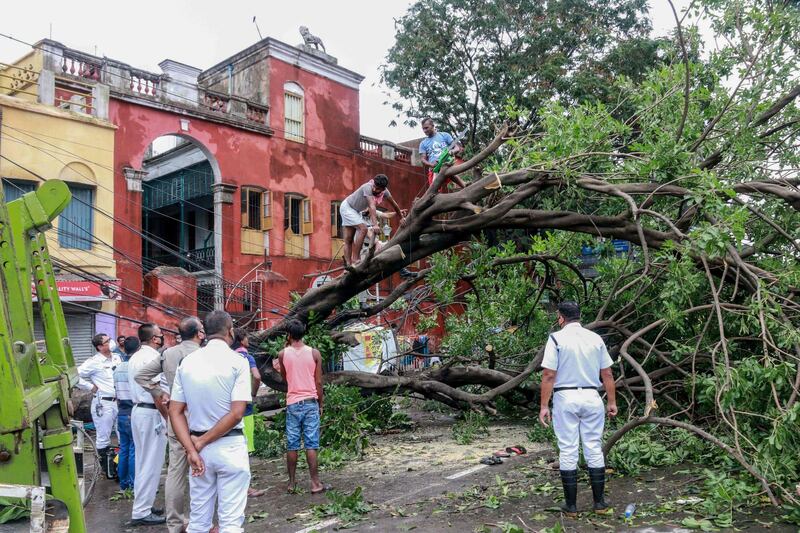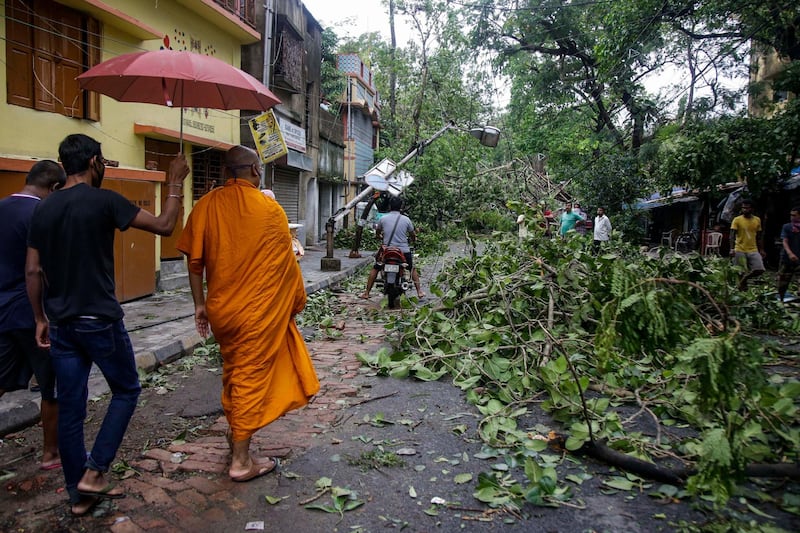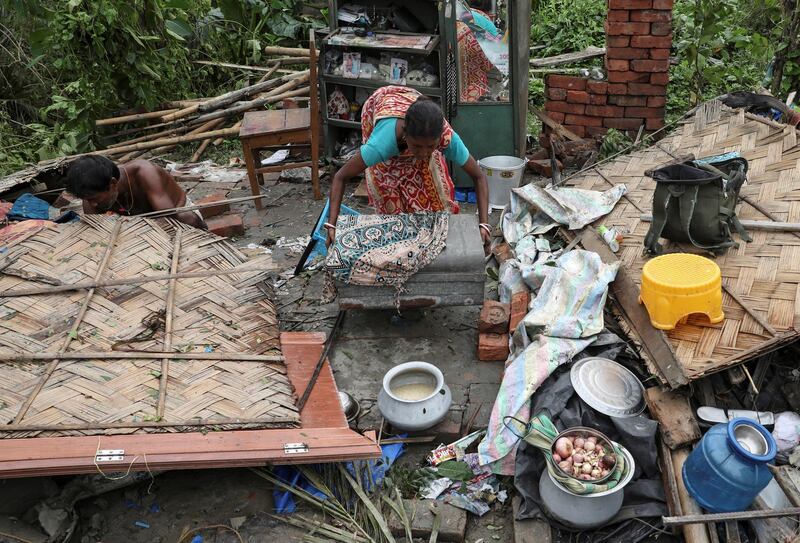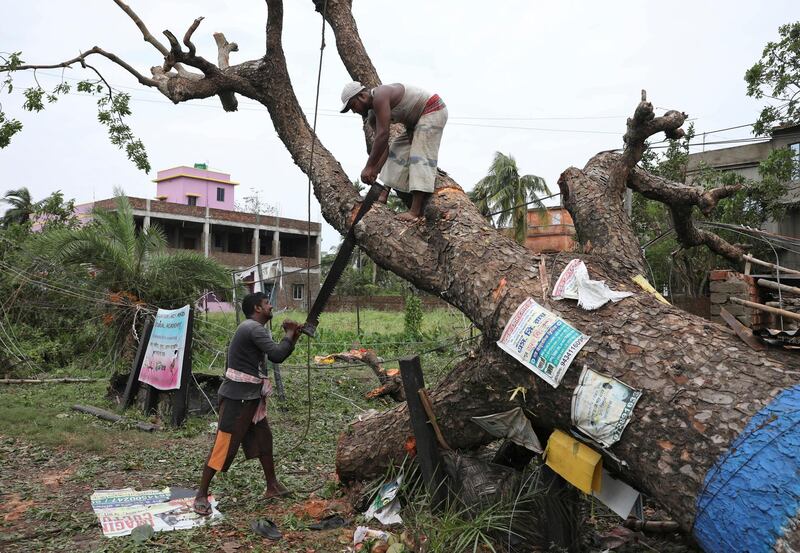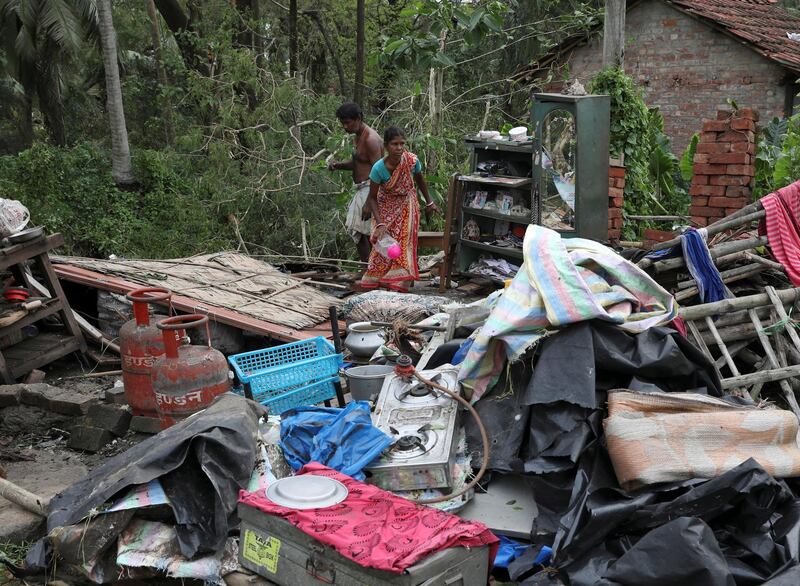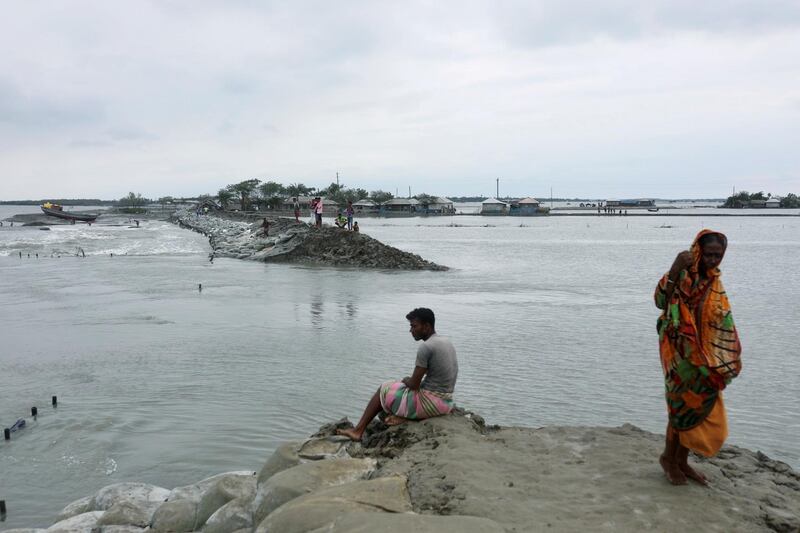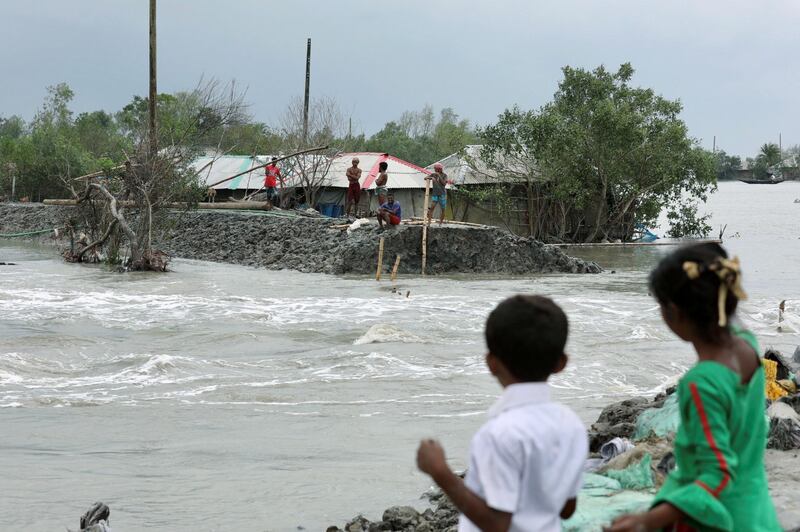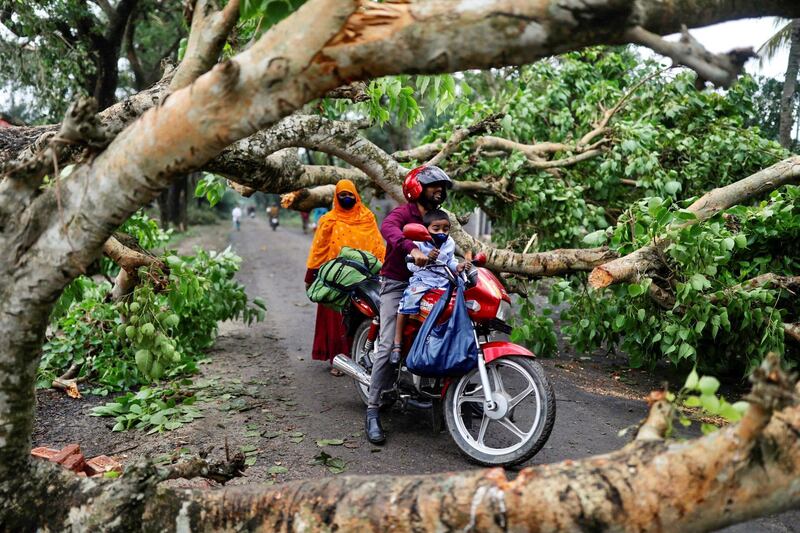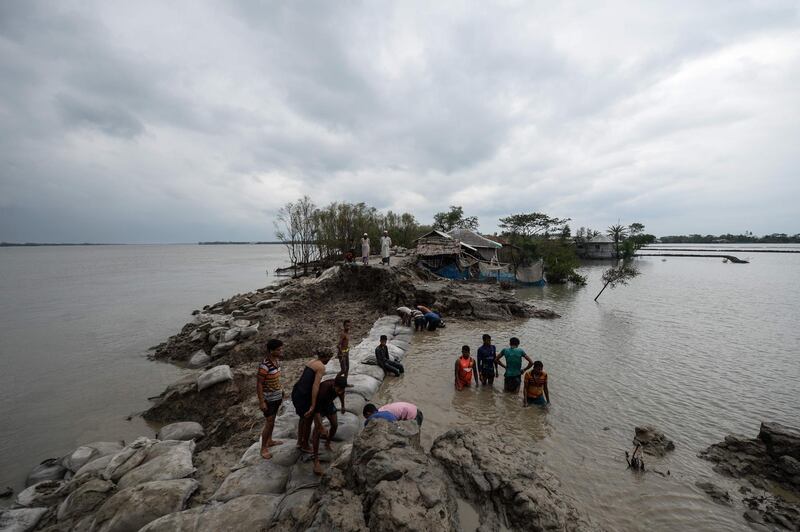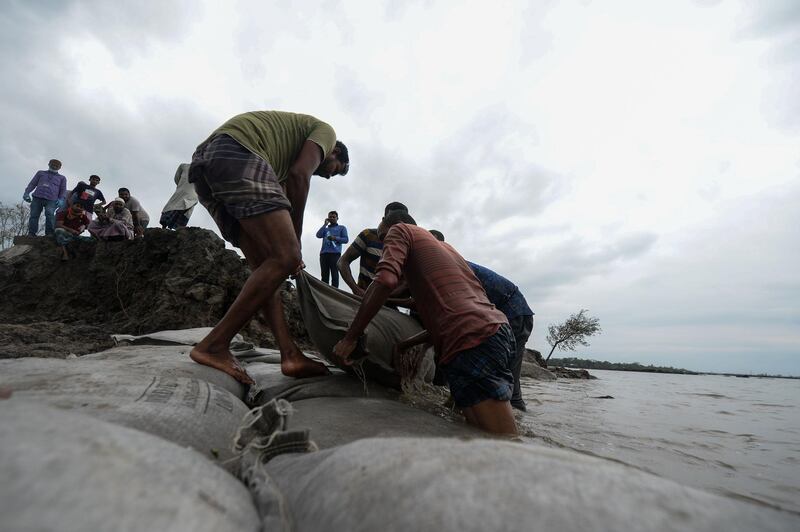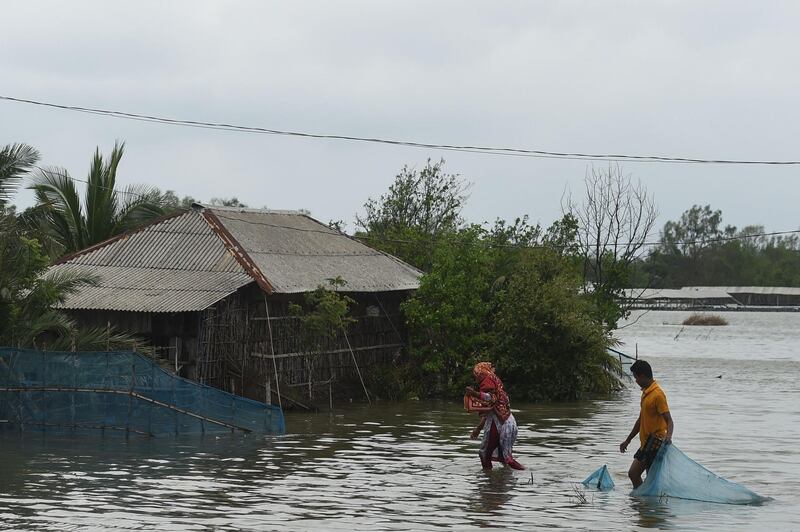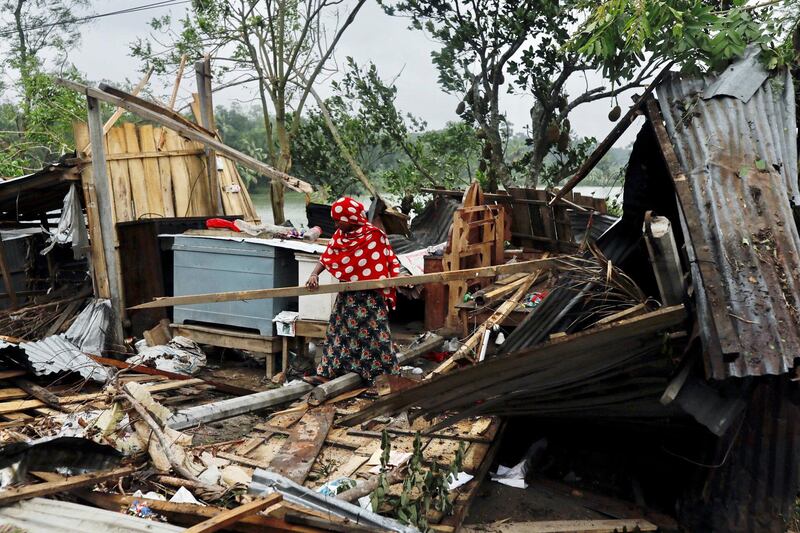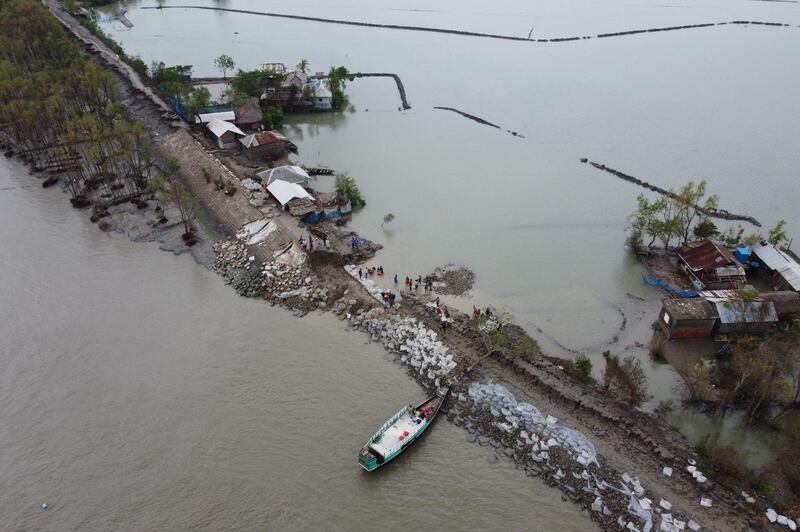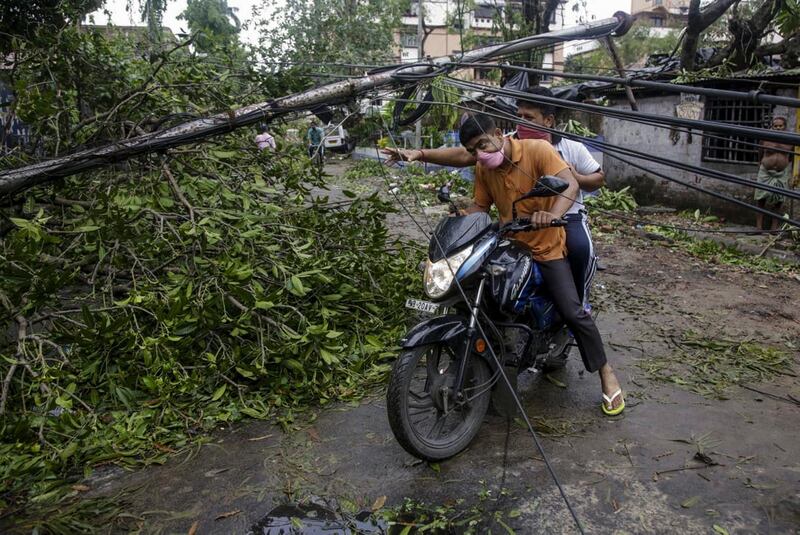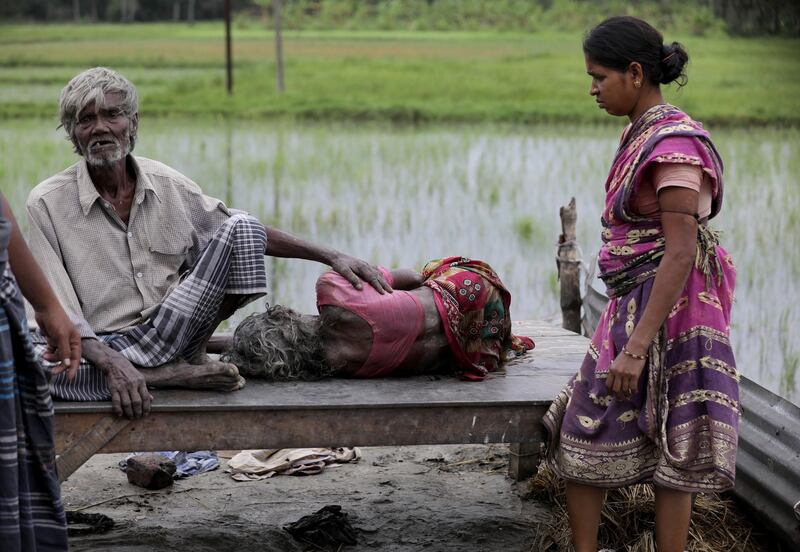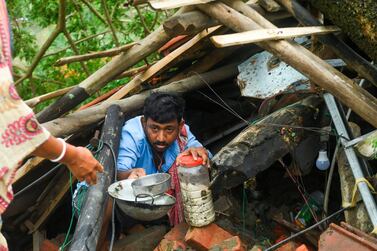Thousands of residents took to the streets of the Indian city of Kolkata on Saturday to protest against what they said was the government’s slow response to power cuts and flooding after a devastating “super cyclone”.
The death toll in India and Bangladesh from Cyclone Amphan’s rampage along the Bay of Bengal coast rose to at least 112 on Saturday, as authorities struggled to deal with the aftermath of the storm while also trying to stop the spread of the coronavirus.
India’s West Bengal state bore the brunt of the storm’s fury, with officials estimating the cost of damage to infrastructure and crops to be $13 billion (Dh48bn).
In Kolkata, the state capital, the storm knocked out transformer stations, setting off spectacular explosions across the city. About 20 people were killed, many of them electrocuted after venturing into the floods.
With many streets still blocked by trees and water, and engineers struggling to get to some parts to restore power, Kolkata residents vented their anger for a second day, demanding faster action to get the city of 15 million people working again.
Police said more than 5,000 people took part in different demonstrations early on Saturday while witnesses said there were more.
Kolkata’s municipal chairman Firhad Hakim said it would take “five to six days to pump out the water from streets, to clear the uprooted trees and restore the water supply”.
Authorities were also trying to clear floodwater from Kolkata airport before domestic flights resume across India on Monday after a two-month coronavirus shutdown.
“The coronavirus made our lives miserable, Cyclone Amphan turned it into hell,” Subash Biswas, principal of a state-run college in Kolkata, told AFP.
Cyclone Amphan was the fiercest storm to hit India and Bangladesh since 1999. At least 86 people are now reported dead in India and 26 in Bangladesh.
The toll was much lower than previous storms in recent decades, which sometimes claimed thousands of lives. About three million people were moved away from the coast before Amphan struck.
The cyclone affected more than 13 million people in West Bengal and damaged more than 1.5 million homes, two state government officials told Reuters.
West Bengal state disaster minister Javed Khan told AFP that hundreds of villages had been flooded after more than 70 kilometres of river embankments were washed away.
“The devastation was so intense that many areas remain inaccessible even three days after the cyclone,” he said.
In North 24 Parganas, a district in southern West Bengal, 700 villages were flooded and 80,000 people lost their homes, the Times of India newspaper reported.
Hundreds of thousands are in relief camps across the state, officials said, amid concern that lax social distancing norms could fuel a spread of coronavirus cases.
The United Nations said the saltwater that flooded inland areas could affect local agriculture for up to three years.
The cyclone also destroyed farmland in Bangladesh’s low-lying coastal areas, damage that will probably endanger livelihoods, non-profit ActionAid said.
“Communities need urgent support as they are without basic necessities such as food, clean water and materials to rebuild their homes,” said Farah Kabir, the country director of ActionAid Bangladesh.
